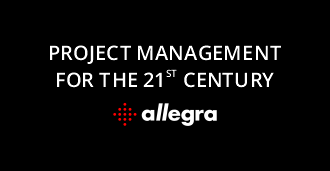A Quick Guide to Project Documentation: Key Tips and Examples
Overview
Despite not being the most glamorous part of a manager’s job, project documentation is the foundation of any successful project.
From the planning phase to creating the project schedule and later managing tasks and teams, documenting your project ensures that stakeholders are on the same page regarding goals, requirements, deliverables, and resources.
Plus, project documentation makes every aspect of your project fully traceable. This clarity, in turn, helps you easily spot any obstacles or delays during the controlling phase.
But how should you approach project documentation? Take a look at the guide below to learn more about the main benefits of project documentation, key tips on how to document a project and examples of crucial project documents you should create.
What is project documentation?
Simply put, project documentation is the process of creating, organizing, and managing a collection of key documents you need to successfully execute a project and report progress to clients and executives.
The project documentation process should start at the beginning of the project and be continued all throughout its lifecycle, recording not only vital information but also any changes that might occur.
Even though project managers are responsible for managing this process, the project documents are created in collaboration with the project team and other important stakeholders.
Once archived, the documents from a recently finished project can be used to streamline the planning and implementation processes for future projects.
Why should you document your projects?

There are numerous advantages behind having a rigorous project documentation process in place, including:
- Clearly define and set goals, requirements, and baseline so that stakeholders have the same expectations of a project
- Turn key project documents into a detailed Work Breakdown Structure you can use to create realistic project schedules
- Get a comprehensive overview of how your project progresses and keep everyone involved up to date on the project’s current status
- Enhance the traceability of your project’s workflow and easily see which tasks need to be completed, when is their deadline and who is responsible
- Improve team communication and collaboration and minimize misunderstandings
- Speed up employee onboarding by providing new team members with access to all the knowledge recorded during previous and ongoing projects
- Be well-prepared when it comes to mitigating potential risk or solving issues that might occur during the implementation of your project
- Evaluate the team’s performance once a project has finished and determine the lessons learned and possible improvements
How to document a project
Want to know how you can stay on top of your project documentation from day one? Here are 3 useful tips to help you create well-written, relevant, and up-to-date project documents that your team can easily access and use when necessary:
-
Keep key project documents in one place
No one likes to do a scavenger hunt for project-related information across Slack channels, chats, emails, and shared drives. Using a project management solution allows you to bring all project documents into one single place, saving you and your team essential time and helping you keep essential information neatly organized and accessible.
-
Stay concise when preparing your project documentation
How often have you come across a milelong project document no one wants to read dumped in an archived folder? When it comes to creating project documents, the golden rule is to write down only what’s necessary while keeping your audience in mind. After all, these documents are part of your organizational knowledge management process, meaning they need to serve as a reference point for future projects.
-
Set regular reminders to update the documents
Most of the time, project managers have at least one dozen things to keep track of without counting the documentation updates. That’s why it’s best to set a time to update project documents so they stay accurate as the project progresses. You can also make documentation maintenance a team effort by giving stakeholders access to make updates when changes occur.
Examples of project documents

What you must keep in mind is that project documentation will differ depending on the industry, company size, and the kind of project you’re managing.
Nevertheless, based on the five project management phases, we’ve outlined some of the most important project documents you’ll need to create at each stage of your project:
1. Initiation project documents
- Project Proposal: The purpose of this project document is to outline the scope, purpose, and objectives of a proposed project and convince stakeholders it’s worth investing time and resources in it. If approved, the project proposal will be used as a starting point when initiating the project.
- Project Business Case: The business case justifies the investment in a specific project while presenting the benefits, costs, and risks involved. The project sponsor and key stakeholders need to review and approve the business case for a project to start.
- Project Charter: The project charter deals with high-level project planning. This project document provides a brief description of the project’s objectives, scope, key deliverables, team roles and responsibilities, budget, potential risks, and constraints. Moreover, it authorizes the start of a project and serves as a base for your project plan.
2. Planning project documents
- Project Plan: The project plan acts as a detailed roadmap for your project. It defines the main objectives, scope requirements, resources, risks, quality criteria, and stakeholder roles and responsibilities while placing tasks, key milestones, and deliverables against a timeline. The main role of this project document is to guide the project’s execution while facilitating communication among project stakeholders.
- Work Breakdown Structure: The work breakdown structure (WBS) document helps you hierarchically map a project and determine the phases, deliverables, and tasks required to achieve the project’s goals and objectives. The WBS is the first step in creating a project schedule, enabling you to allocate resources efficiently and determine dependencies between tasks.
3. Execution project documents
- Project Status Report: Since projects require regular status reports to ensure that everything stays on the right track, you can use this type of document to inform relevant stakeholders on the progress made so far and what’s planned to happen next.
- Project Communication Plan: The communication plan describes how the project manager and the project team will communicate during the length of the project. This project document should include the communication methods used, how frequent information should be shared across the team or with other stakeholders, and the contact information details.
- Risks & Issues Log: This is an essential risk management tool for identifying and keeping track of roadblocks within a project and other potential issues that might negatively impact its delivery. Project managers use this log to prioritize issues, determine the action required to solve each problem quickly, assign a team member to take care of it, and keep an eye on its status until it has been resolved.
4. Controlling project documents
- Change Request Management: This document tracks changes to the initially agreed project scope. Each change should be recorded here while mentioning what it involves, who requested it, the reason for requesting it, its impact on other areas of the project (budget, timeline, etc.), and how much it will cost to implement it. After the proposed changes are reviewed, they can be approved and executed or dismissed.
5. Closing project documents
- Project Closure Document: The role of this document is to formally close a project. Also known as a project review document, it includes an overview of the project, encompassing scope, budget, deliverables, timeline, and lessons learned. This report enables project managers and other key stakeholders to evaluate if the project’s performance matches its original objectives and whether deliverables meet previously set expectations in terms of quality.
Apart from the documents mentioned above, meeting agendas and minutes are also included in the project documentation process. While agendas determine what will be discussed in a project meeting and who will participate, the minutes present what has been decided as a result of that meeting.
Managing project documentation with Allegra
It’s easy to get overwhelmed just by thinking about the amount of paperwork you have to organize and manage from the start of a project until the final deadline.
That’s why it’s best to use a project management tool that can help you manage all documents in one place from one phase of the project to another while keeping everyone in the loop.
Allegra’s Enterprise plan comes with the Wiki perspective, which allows you to collaboratively create project documents such as meeting agendas, protocols, and notes and share them with your team, executives or clients.
Wiki can effectively handle the most common document creation tasks like any other word processor, thus supporting figures, standard tables (no nested tables), text styling (bold, italic, and underline), headings, code blocks, and ordered and unordered lists. You can also switch between inline editing a single document section to full edit mode, where you can see the whole document at a glance.
Wiki documents can be easily exported into Word documents using Word templates, or to PDF documents via LaTeX templates, enabling you to effortlessly generate documents with a clean and appealing layout. Moreover, you can organize your collection of Wiki documents into folders for each workspace for easier access. Once the project is completed, you can archive everything with a few clicks.
Want to put Allegra to the test? Start your 30-day trial today and optimize your project documentation efforts.




